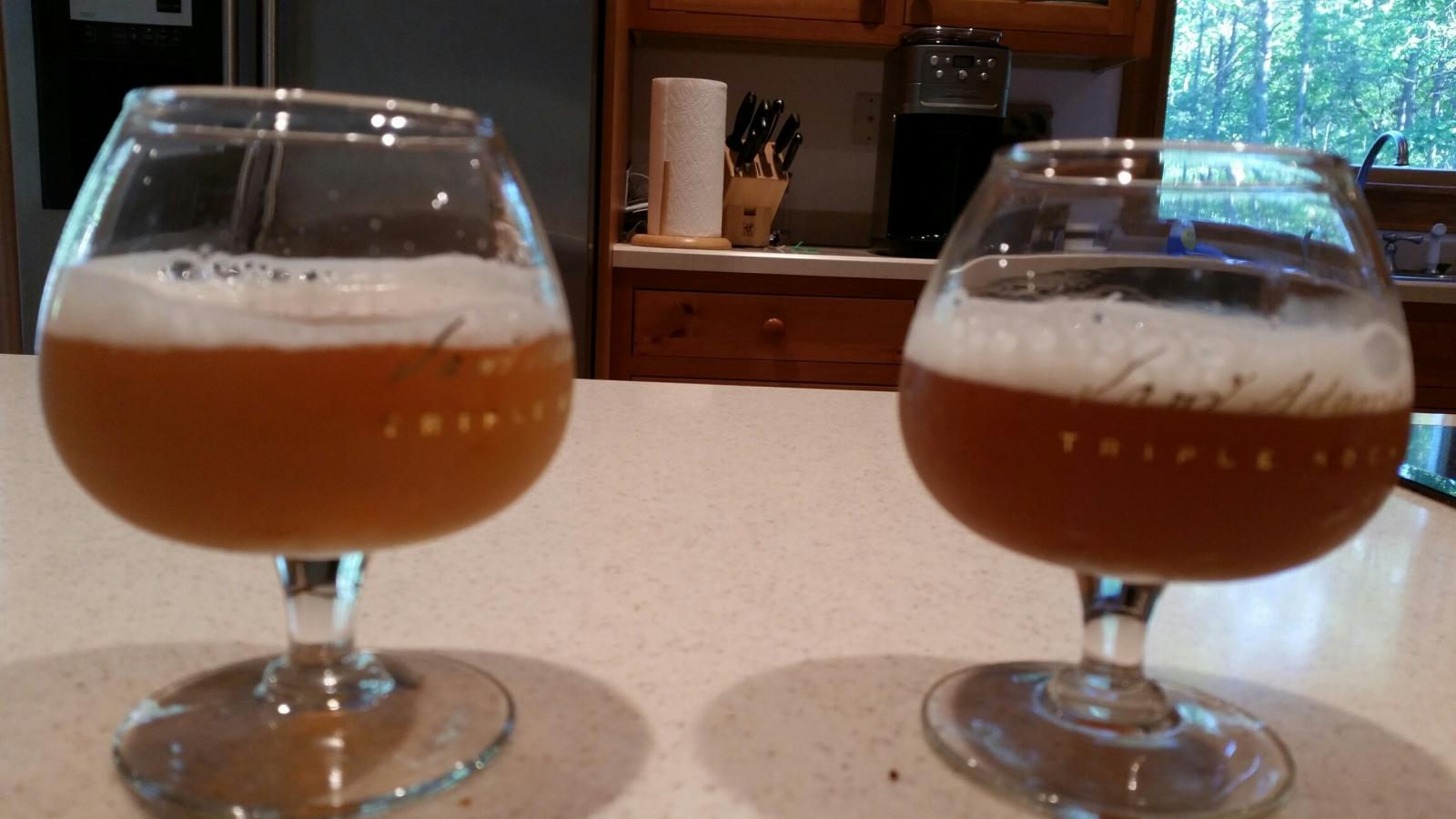Hey LL I really like the look of this recipe. I purchased the grains today for it. Any chance you can elaborate a little more on the recipe? Batch size? Mash time and temp? Ferm schedule? Also not quite sure how to break down the hop schedule by percentages. Any input on that? Newer to advanced brewing. Thanks in advance for anymore insight.
Yeah sure thing:
11# golden promise
3# white wheat
1# carapils
1# flaked wheat
6oz honey malt
4oz corn sugar (15 min remaining in boil)
.25 whirfloc tablet (15 min remaining)
Water:
Distilled water 9 gallons
I throw all salt additions into one gallon of room temp distilled water the night before to get everything nice and dissolved (Mark cap with a sharpie to make sure it gets added to mash water)
10 grams calcium chloride
2 grams gypsum
2 grams Epsom salts
I've been using this as my go to IPA addition for sometime so I can't recall the exact concentrations of each but I'm pretty sure it's around 200:100 chloride to sulfate. All additions are added to the mash. I add in 1-2mL lactic 88% to bring the pH into sweet spot. I don't get super crazy about these numbers anymore but more ballpark
Mash 5 gallons at 164F for a 152F mash for 60 min
Batch sparge 3.75 gallons at 175F
Add whirfloc and corn sugar at 15
1 oz each citra/Rakau/galaxy at 5
2 oz citra 1 oz rakau 1 oz galaxy 180F whirlpool 20 min
2L starter of Conan pitched at 67F
Day 3 or once krausen starts to fall add first round of dry hops
1 oz citra
1 oz galaxy
Wait till activity COMPLETELY stops. Usually around a week or so
Drop temp to 60F
Add 2nd round of dry hops
4 oz citra
2 oz Rakau
Dry hop for 3-4 days
WORK SUPER HARD AT COLD SIDE OXYGEN EXPOSURE!
Try your best to keep sampling and cracking that carboy lid to a bare minimum. This I have found to be the biggest aroma killer
I keg my beers and kegged this one around day 8-9. Took a few days to carb up but I found this REALLY shined at about 10 days after being kegged.
Feel free to message me or ask for any other pointers about this one. Good luck! Excited to see how it goes for you














![Craft A Brew - Safale BE-256 Yeast - Fermentis - Belgian Ale Dry Yeast - For Belgian & Strong Ales - Ingredients for Home Brewing - Beer Making Supplies - [3 Pack]](https://m.media-amazon.com/images/I/51bcKEwQmWL._SL500_.jpg)












































